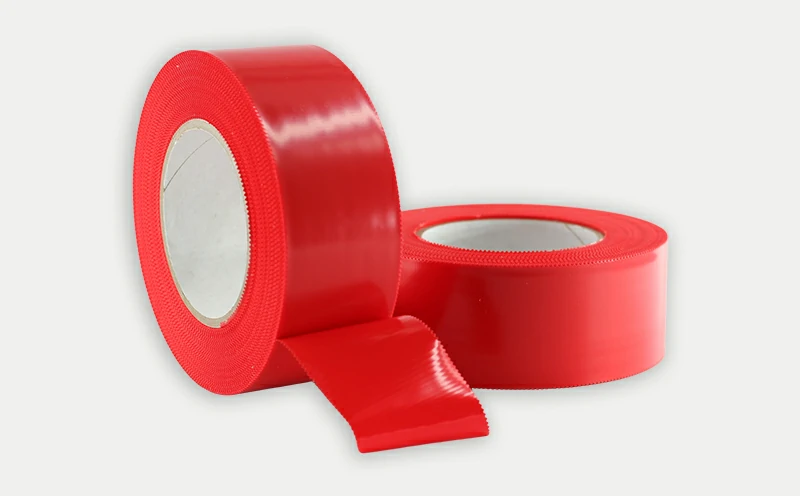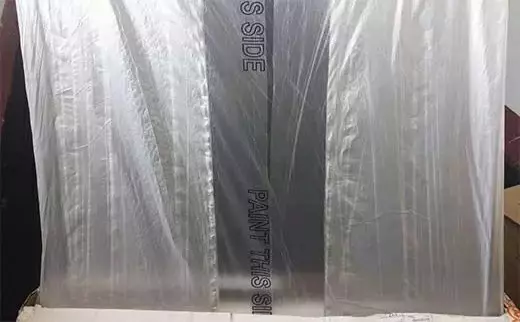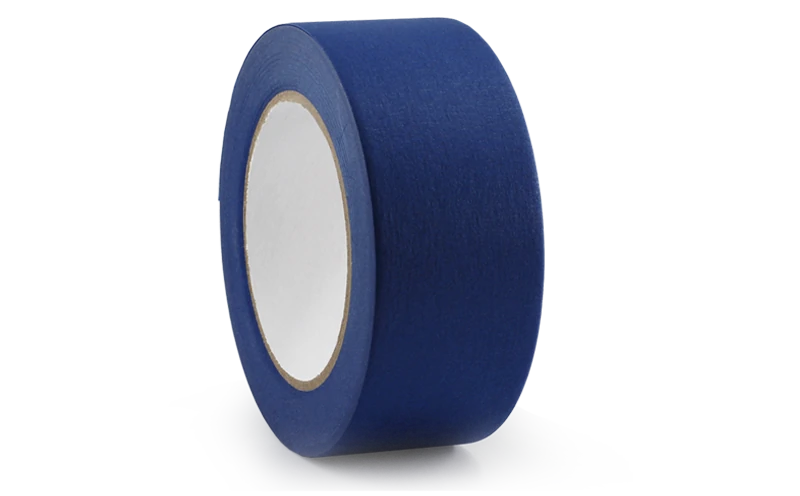When it comes to preparing surfaces for painting, protecting areas from overspray, drips, or dust is crucial. This is where pre-taped masking products come in handy. By combining adhesive masking tape with a protective sheet, either film or paper, these products streamline the preparation process, ensuring that your work area stays clean and tidy. But how do you choose between pre-taped masking film and pre-taped masking paper? In this post, we’ll compare the two to help you make an informed decision based on your specific needs.
What is Pre-Taped Masking Film?
Pre-taped masking film is a popular solution for large-scale painting projects. It consists of a roll of adhesive masking tape attached to a roll of transparent plastic film. The tape along one edge allows for quick and easy application, making it ideal for large surface areas.
Key Features of Pre-Taped Masking Film:
Material: Made from thin, clear plastic (usually polyethylene or a similar high-density film).
Coverage: Designed to cover large areas, making it perfect for windows, doors, walls, cabinets, and even vehicles during painting projects.
Overspray Management: Many pre-taped masking films come with a special coating or static charge that helps attract and trap paint overspray, reducing the risk of drips or runs.
Visibility: Its transparent nature allows light to pass through, which is useful when masking windows or areas where visibility is important.
Durability: Lightweight, tear-resistant, and more resistant to water, paint, and solvents compared to masking paper.
Flexibility: Conforms well to curved or irregular surfaces, such as furniture or vehicle bodies.
Advantages:
Quick and easy application, reducing preparation time.
Provides a complete barrier against paint, dust, and other contaminants.
Ideal for larger areas like walls or floors.
Disadvantages:
Less breathable, which could lead to trapped heat and moisture.
Can tear under heavy pressure or rough handling.
Common Uses for Pre-Taped Masking Film:
Protecting large surfaces, like walls, windows, and furniture, during painting or spray painting.
Automotive painting to safeguard vehicle bodies from overspray.
Containing dust during sanding or demolition.
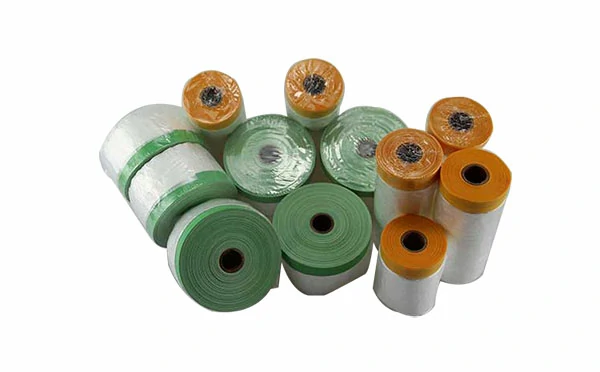
What is Pre-Taped Masking Paper?
Pre-taped masking paper is another popular option for protecting surfaces, particularly in tasks that require more precise or detailed work. It combines adhesive masking tape with a roll of masking paper, which can be used to create sharp lines and absorb paint drips.
Key Features of Pre-Taped Masking Paper:
Material: It consists of an adhesive masking tape attached to a roll of paper, often kraft paper, with optional plastic coatings for added durability and resistance.
Coverage: It is perfect for smaller, more precise masking jobs and for creating sharp, clean paint lines. It generally covers narrower widths compared to masking film.
Absorption: The paper absorbs paint drips and splatters, which can be advantageous when working with thicker paint or in areas prone to heavy splatter.
Conformability: Flexible and ideal for covering curves, corners, and irregular surfaces, such as skirting boards, door frames, and trim.
Durability: It absorbs paint and is generally robust for extended use. While tear-resistant, thinner paper might be more susceptible to tearing if heavily saturated with paint or handled roughly, especially when compared to film.
Ease of Use: It is simple to apply and remove, offering efficiency for targeted protection in your painting projects.
Advantages:
Ideal for creating sharp paint lines and for smaller masking jobs.
Absorbs paint, reducing the chance of paint running.
Conforms well to detailed areas and tight corners.
Disadvantages:
Less effective at covering large areas compared to pre-taped masking film.
May tear more easily if oversaturated with paint.
Common Uses for Pre-Taped Masking Paper:
Masking trim, baseboards, door frames, and window frames.
Protecting small fixtures, such as light switches or outlets, during painting.
Arts and crafts or woodworking projects where absorption is desired.
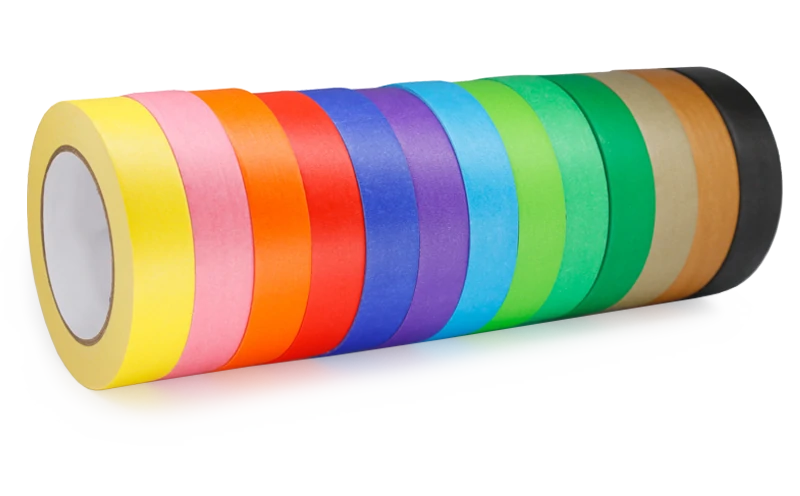
Pre-Taped Masking Film vs. Pre-Taped Masking Paper: Which Should You Choose?
Both pre-taped masking film and pre-taped masking paper offer unique advantages depending on your needs:
Choose Pre-Taped Masking Film if you need to cover large areas quickly, such as walls, windows, or furniture. It’s particularly useful for projects that involve automotive painting or when you need to protect surfaces from heavy overspray and dust.
Choose Pre-Taped Masking Paper if you’re working on more detailed painting tasks where you need sharp, clean lines, or if you require absorption for paint drips. It’s ideal for trim work, baseboards, and smaller surface areas.
Conclusion
The choice between pre-taped masking film and pre-taped masking paper ultimately depends on the scale of your project and the level of precision you need. For larger areas and easier protection against paint overspray, masking film is your best bet. However, for smaller, more detailed work where absorption and sharp lines are critical, masking paper provides an excellent solution.
No matter which product you choose, both pre-taped masking film and pre-taped masking paper will help streamline your preparation process, allowing you to focus on the important aspects of your painting or renovation project.

